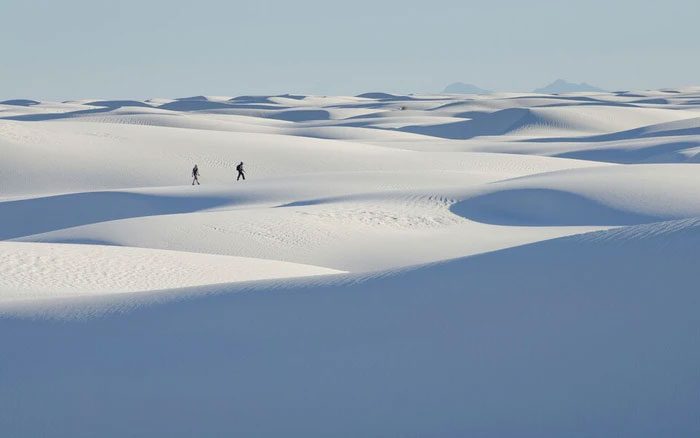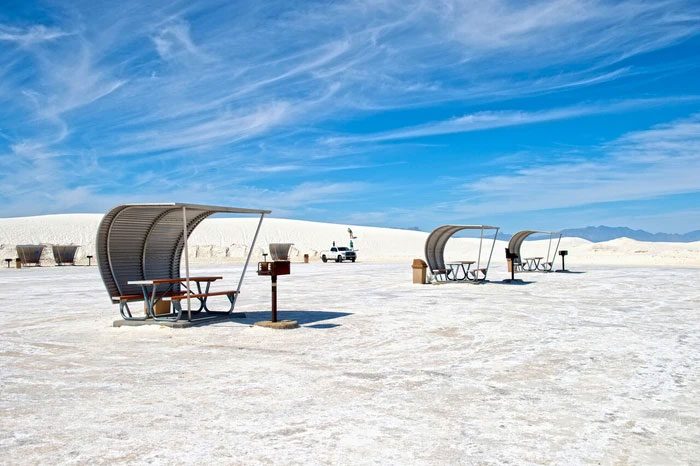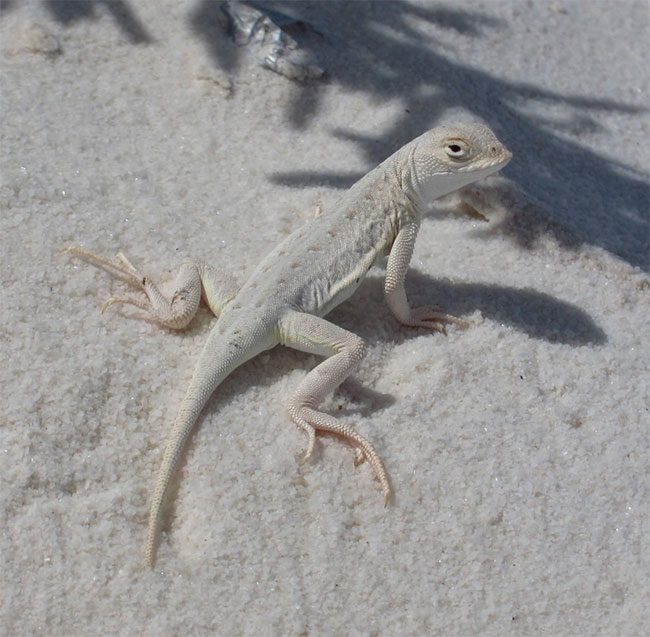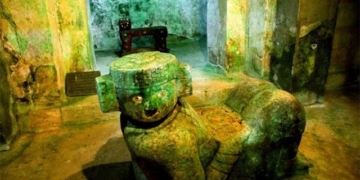If you just look at the pictures, many might mistake this desert for a snowy field.
White Sands, the 62nd national park in the United States, is a place unlike any other in the world: A stretch of snow-white sand spans 121,000 acres and is home to over 600 species of invertebrates.

The rising dunes often provide a unique view of the desert.
Notably, among these species are several “endemic” ones – mice, lizards, moths, and others that have gradually lightened in color to adapt to their surroundings.
The dunes rising from the Tularosa Basin offer a particularly stunning view at dawn or dusk: the bright dunes sparkle brilliantly. This phenomenon occurs because the grains of sand in the desert are not ordinary grains; they are made from a soft mineral that reflects light instead of allowing it to pass through.
According to The Telegraph, when Otero Lake – once a permanent salt lake – began to dry up around 7,000 to 10,000 years ago, these pristine white dunes gradually formed.

Bright dunes sparkle brilliantly. (Illustrative image).
Furthermore, White Sands is famous for having the largest collection of fossilized footprints from the Ice Age, revealing a history of over 10,000 years of human presence. According to scientists’ research, ancient people in this region shared the land with large animals, such as giant sloths, mammoths, and saber-toothed cats.
In addition to the natural trails running through the desert, visitors can also access it via an 8-kilometer road leading to the center of the dune field. Sunset walks, full moon viewing, and meteor shower parties are regularly organized to provide tourists with more special experiences when visiting the park.
Additionally, there are other exciting activities, including sliding down the dunes on wax-coated plastic discs (which can be purchased from the park’s gift shop) or participating in MothaPalooza – an event focused on studying the 60 species of moths found in White Sands.

This is home to over 600 species of invertebrates.
Located in the northern part of the Chihuahuan Desert, White Sands is recognized as the second national park in New Mexico. Since it was still operational as a national monument, it attracted about half a million visitors each year, and this number is expected to increase significantly after White Sands was officially designated a national park.


















































